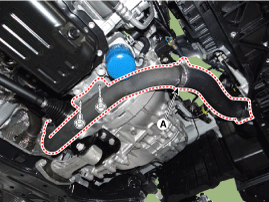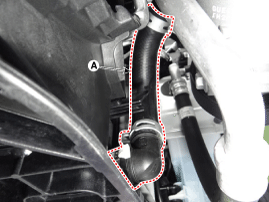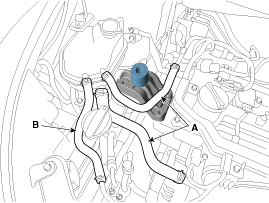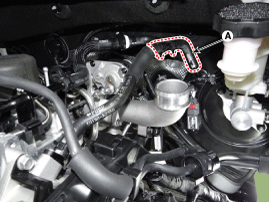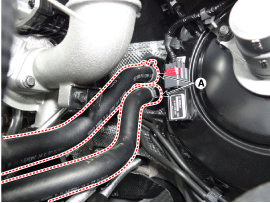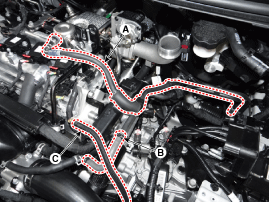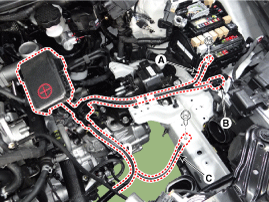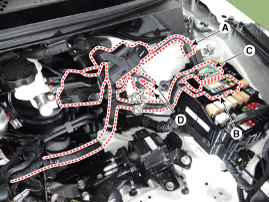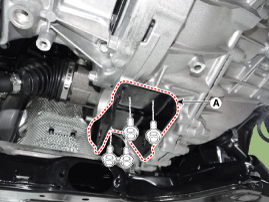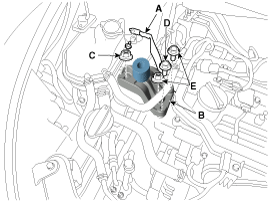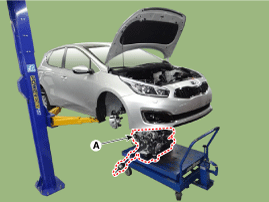Remove the intercooler inlet hoses & pipe (A).
Tightening torque
Hose clamp bolt :
4.9 ~ 6.9 N.m (0.5 ~ 0.7 kgf.m, 3.6 ~ 5.1 lb-ft)
(If equipped with a cap, tighten it until the cap is removed.)
Pipe mounting Bolt :
19.6 ~ 26.4 N.m (2.0 ~ 2.7 kgf.m, 14.4 ~ 19.5 lb-ft)
